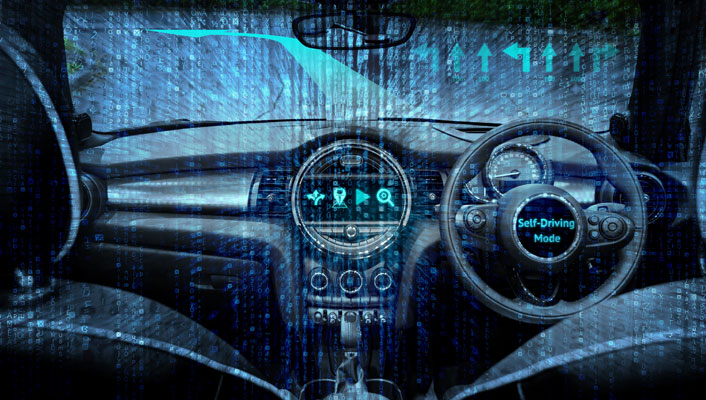There’s no doubt that cars are set to become increasingly connected and technology is steadily advancing from semi-autonomous vehicles to fully autonomous or driverless vehicles.
February 2015 saw the launch of the UK driverless car trials in Greenwich, Bristol and Milton Keynes which generated high profile hype and speculation across both the business and consumer landscape. The UK Government believes driverless cars are the future and is keen to see Britain at the forefront of this new technology. And of course, much has been written about the future impact on the motor insurance industry and the fundamental changes that will be necessary to the existing motor insurance service model.
However, perhaps we should view these future ‘intelligent transport solutions’ as evolutionary rather than revolutionary. Many of today’s modern cars already have significant levels of autonomy which lead to the driver monitoring as opposed to constantly operating the vehicle. These include automated parking, lane departure warning systems, active cruise control and autonomous emergency braking [AEB].
Are driverless cars increasing or reducing road traffic accidents?
Addressing road safety benefits in the first instance: according to the Association of British Insurers [ABI], 90% of road traffic accidents are caused by human error. Advances in technology towards autonomous vehicles will have positive implications on road safety with the potential to reduce the number and severity of accidents. AEB which involves the automated application of the brakes if the driver does not respond in time has already been proven to lower the rate of low speed collisions resulting in personal injury claims by circa 20%.
Autonomous cars: the challenges facing the motor insurance industry
One of the key challenges for the motor insurance market has been identified as the potential transfer of risk. As vehicles become increasingly connected with other vehicles and as control transfers from human to computer; what responsibilities do the driver and the vehicle manufacturer have in the event of an accident?
How is liability determined if the driver has the ability to over-ride the computer? Will the condition of the driver, if under the influence of alcohol for example, no longer be a factor? What if the autonomous car has an accident with a conventional car?
There is also the potential for criminal activity, for example where an accident could be caused by hacking into the autonomous car’s computer programme.
The United Nations Economic Commission for Europe [UNECE] Transport Division is laying out legislation that will standardise autonomous car technology. This will help to provide insurance companies with a platform from which to prepare for change, better understand the risks and address some of the questions to be answered in terms of insurance provision. System reliability and consistency of standards will be a critical factor.
Drawing on the experience of automation within the aviation sector may also prove beneficial. It is expected that, in line with the aviation sector, a driver will continue to remain liable in the event of a crash if they are able to over-ride the technology and assume control of the vehicle. Increased automation within planes led to the introduction of training for pilots in effective system monitoring. Going forward, driver training and testing will likely require modification to remain relevant and ensure the anticipated road safety benefits associated with driverless cars are realised. The Government is also considering changes to the Highway Code in order to accommodate driverless cars.
Motor insurance: product versus driver liability cover
For insurers, the shift to product liability as opposed to driver liability will come when the driver is not expected to oversee or monitor the car and relies on the on-board computer which is connected to the internet and other vehicles on the road, to make its own decisions. The move to this totally connected, driverless transport solution may seem like a Sci-Fi dream but many are predicting that this will be reality by 2030. Consumer trust in this new technology will dictate the speed of adoption at a generalised level. However, it’s clear to see the potential life-changing benefits on the horizon for those with disabilities and related mobility issues.
There are years of rigorous testing ahead before we routinely become passengers in our own cars. The conventional motor policy remains the solution for the semi-autonomous cars on our roads but insurers will be carefully monitoring the developments in this new technology, mindful of underwriting implications and the future subrogation opportunities and challenges related to driverless car insurance claims.



